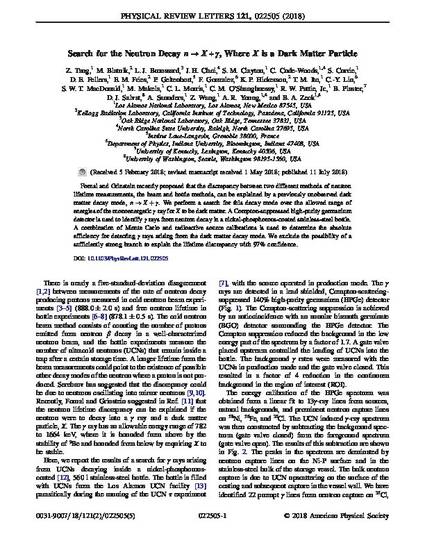
Article
Search for the Neutron Decay n → X + γ , Where X is a Dark Matter Particle
Physical Review Letters
(2018)
Abstract
Fornal and Grinstein recently proposed that the discrepancy between two different methods of neutron lifetime measurements, the beam and bottle methods, can be explained by a previously unobserved dark matter decay mode, n→X+γ. We perform a search for this decay mode over the allowed range of energies of the monoenergetic γ ray for X to be dark matter. A Compton-suppressed high-purity germanium detector is used to identify γ rays from neutron decay in a nickel-phosphorous-coated stainless-steel bottle. A combination of Monte Carlo and radioactive source calibrations is used to determine the absolute efficiency for detecting γ rays arising from the dark matter decay mode. We exclude the possibility of a sufficiently strong branch to explain the lifetime discrepancy with 97% confidence.
Keywords
- Neutron Decay,
- Dark Matter Particle
Disciplines
Publication Date
July 13, 2018
DOI
10.1103/physrevlett.121.022505
Publisher Statement
©2018 American Physical Society. Authors have the nonexclusive right to post the APS-prepared version of the article to an institutional repository. This document was originally published in Physical Review Letters.
Citation Information
Zhoawen Tang, Marie Blatnik, Leah J. Broussard, J. H. Choi, et al.. "Search for the Neutron Decay n → X + γ , Where X is a Dark Matter Particle" Physical Review Letters Vol. 121 Iss. 2 (2018) ISSN: 0031-9007 Available at: http://works.bepress.com/robert-pattie/1/
